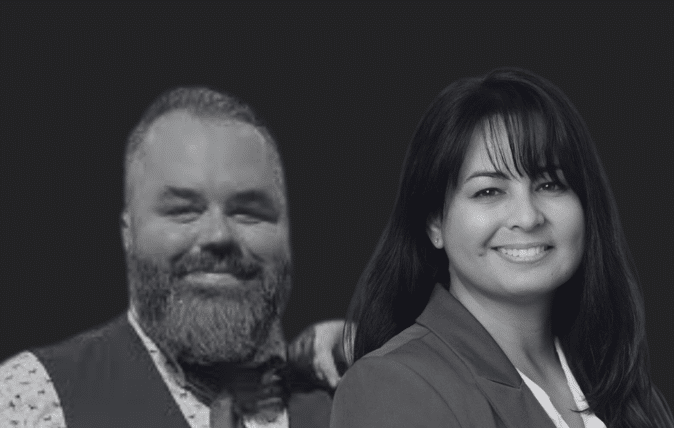When Protectors Need Protection: How to Support Your Team’s Mental Health
Your team encounters emotionally stressful situations daily — here’s how to support their well-being and enhance overall productivity

High stakes, intense pressure, and a constant need for vigilance often define the corporate security industry. Your team routinely faces demanding situations — from crisis management to conflict resolution — directly impacting your organization’s safety and reputation. While qualities like strategic thinking, integrity, and technical expertise are often spotlighted as hallmarks of a strong security team, one equally vital component is frequently overlooked: mental health.
Great corporate security leaders take responsibility for creating an environment that protects their team and the broader organization. Team culture always starts at the top, so it’s essential to foster a culture where everyone feels empowered to perform at their best while also feeling emotionally and psychologically safe.
Why mental health matters in corporate security
Your team handles everything from workplace violence to threat assessments and crisis response — situations that test not only physical readiness but also emotional resilience. Ignoring the mental health impact of these situations can have serious consequences. Burnout, PTSD, and emotional fatigue don’t just affect individuals; they undermine team cohesion, decision-making, and overall program effectiveness.
Imagine a team member struggling with burnout and emotional fatigue. In a culture where speaking up isn’t encouraged, they may feel pressured to “tough it out.” As a result, they miss critical warning signs of an insider threat, leading to a theft incident. The incident amounts to hundreds of thousands of dollars lost, a costly investigation, and a ripple effect of mistrust across departments.
Supporting your team’s mental health isn’t just the right thing to do — it’s essential for building a strong, effective, and resilient security operation. Here’s how you can start taking action.
5 ways to better support your team’s well-being
Foster a culture of psychological safety
A psychologically safe environment is one where employees feel comfortable speaking up about their mental health challenges without fear of judgment, punishment, or embarrassment. Psychological safety starts with a genuine connection. Get to know your team as individuals. Understand what motivates them, what stresses them out, and how they prefer to communicate.
“It’s about getting to know who they are, not just in the work that they do or where they came from or what it is that they bring to the role, but really what is getting to know them as humans.”
— Arian Avila, VP, Safety and Security at Capital One
Then, set clear expectations that you care about their well-being while holding high-performance standards. When trust is combined with accountability, team members feel supported — even under pressure. Proactively check in with individuals (rather than waiting for them to come to you) and show, through consistent actions, that it’s safe to be honest and ask for support.

Empowering Teams Through Mental Health Awareness with Elda Baez
Model vulnerability and transparency
Even if you believe you’ve created a psychologically safe environment, your team may still hesitate to speak up unless they see you modeling the behavior first. If you’re unwilling to acknowledge your own struggles or practice the habits you promote, your team will notice the inconsistency. Lead by example.
Consider sharing your own experiences with mental health challenges, such as PTSD or anxiety, or discussing particularly traumatic events from your corporate security career. Be open about how those experiences affected you emotionally and the strategies you use to cope.
“People don’t care how much you know until they know how much you care.”
— Elda Baez, Senior Safety and Security Specialist at HUB International
Recognize the signs of burnout and stress
Even with your best efforts to create a safe space, some team members may still struggle to open up. That’s why it’s crucial to train yourself to recognize signs of burnout, stress, or mental strain early, before issues escalate.
Is someone who is usually punctual arriving late more frequently? Has their tone or communication style changed? Are they withdrawing from the team? These subtle shifts can indicate deeper issues that need attention. When you notice these signs, don’t try to “fix” the person or take on the role of a counselor. Instead, act as a bridge to resources, helping them take the next steps toward recovery.
If you’re struggling to identify the signs of mental and emotional strain, consider professional training. One resource is the Mental Health First Aid program. Similar to CPR, it equips you with the tools to recognize early warning signs of mental distress, approach the individual with empathy, and guide them toward the right resources.
Diversify your support resources
Employee Assistance Programs (EAPs) are a great starting point for offering help, but they can’t be the only option available. Some employees may feel reluctant to use EAP resources because of lingering stigma or doubts about confidentiality. Diversify the resources your team can access, whether that’s through anonymous mental health hotlines, peer support networks, or internal resource centers tailored to your team’s specific needs.
For example, Arian Avila collaborates with a forensic psychologist to deliver trauma training tailored to her team’s unique daily challenges. She has made this training a mandatory part of onboarding, emphasizing the importance of managing stress in the workplace from day one.
Create time for reflection
One of the simplest yet most impactful practices you can encourage is scheduling intentional time for reflection. This could involve team-wide pauses to debrief after significant events, focusing on how the incident affected both the team and individual well-being. These moments show that you recognize the toll this work can take on mental health, fostering trust and reducing the likelihood of long-term mental health challenges.
You can also encourage your team to adopt individual practices that work for them, such as structured self-check-ins or pre-planned PTO days dedicated to mental health.
“Giving ourselves and others some grace, especially when we have a bad day or interaction, allows us to step back and reflect on how we can learn and get better.”
— John Rodriguez, Founder, Empathic Security Cultures
Moving beyond the stigma
Mental health is no longer an off-limits or “soft” topic within the workplace — especially not in the corporate security industry. The nature of your work brings unique challenges that demand resilience, focus, and emotional support.
Remember, being a leader isn’t just about managing tasks. It’s about helping people thrive in their roles. When you prioritize mental health, you’re not only protecting individuals but also strengthening the overall impact of your security program. Make mental health support a core part of your strategy — your team, and your results, will thank you.








